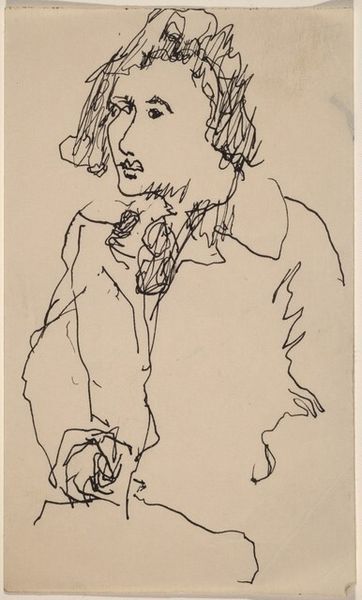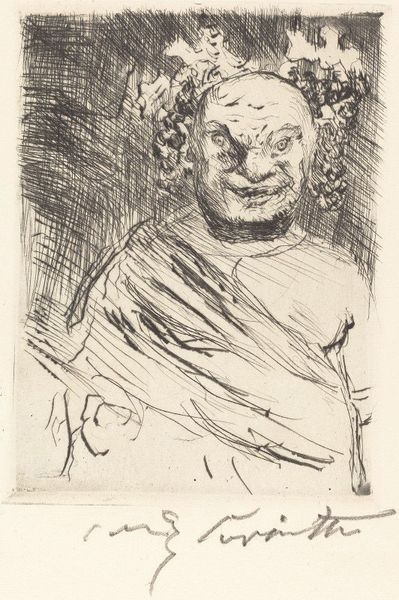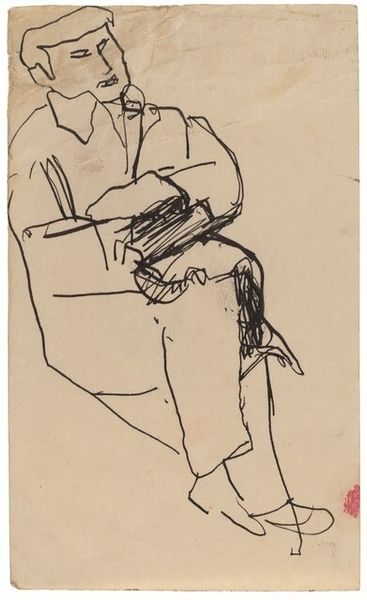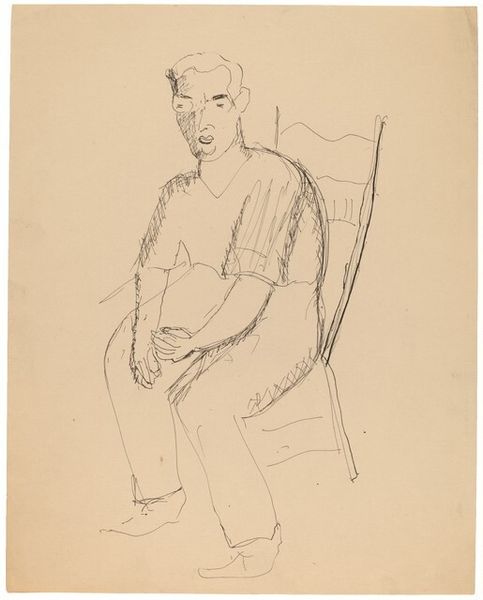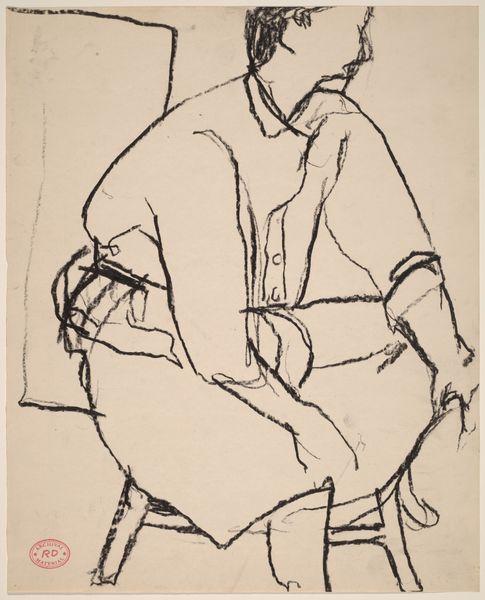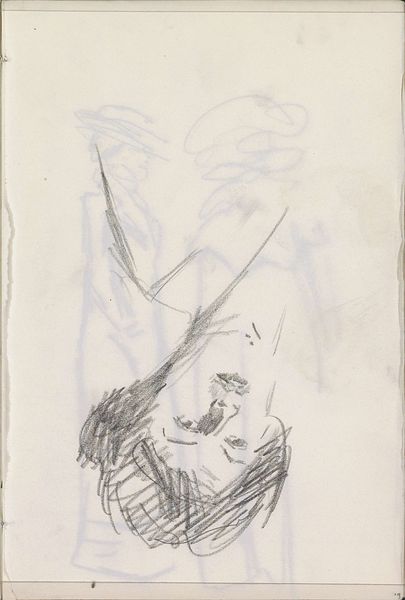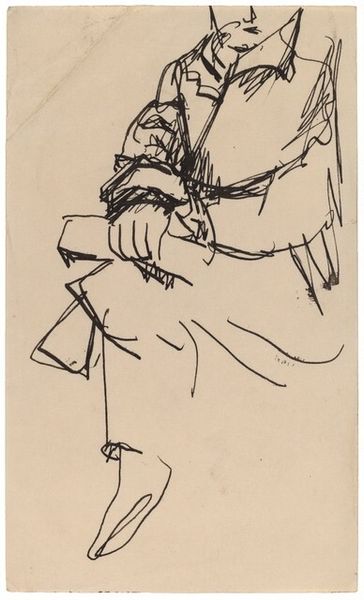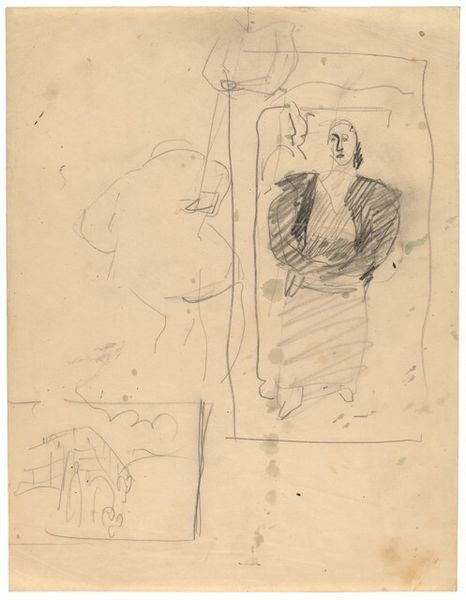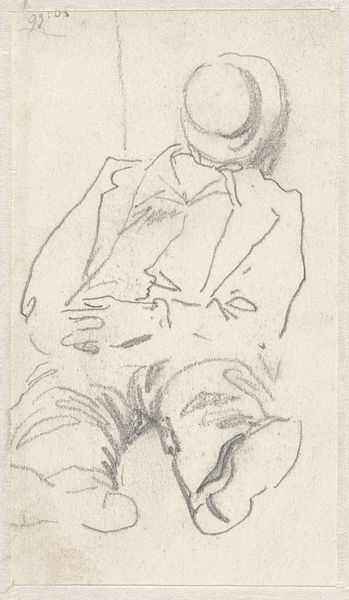
drawing, paper, ink
#
drawing
#
pen illustration
#
figuration
#
paper
#
ink
Dimensions: overall: 20.1 x 12.7 cm (7 15/16 x 5 in.)
Copyright: National Gallery of Art: CC0 1.0
Editor: This ink drawing on paper is titled "Man with Mustache Seated, Window and Walls Behind," and it's by Mark Rothko. The rough lines give it a really immediate, almost unfinished feel. What's your read on this? Curator: It's tempting to view this outside the context of Rothko's career, especially given his later focus on abstraction. However, seeing this drawing as part of the larger trajectory allows us to consider the role of figuration in his artistic development and the expectations placed on artists at different stages. Does this image challenge your expectations of what Rothko should be? Editor: Definitely. I only knew Rothko from his abstract expressionist paintings. So this drawing makes me wonder, why did he turn away from figuration? Was it a market-driven decision, or a genuine shift in his artistic vision? Curator: That’s a critical question. Abstraction was gaining momentum, seen by some as a more "advanced" and "universal" form of expression. Institutions and collectors played a crucial role in promoting abstract art, shaping public taste and, arguably, influencing artists' choices. Did Rothko feel pressure to conform to this emerging market and critical preference for abstraction? It's equally valid, of course, that he felt more artistically suited to it. Editor: So, this seemingly simple drawing opens up a much larger discussion about the art world’s expectations and pressures. I didn’t expect that. Curator: Exactly! And by examining how artists like Rothko navigated those pressures, we can better understand the social and cultural forces that shape the art we see in museums today. This small drawing reveals the complicated negotiations all artists have with the art market and institutional tastes.
Comments
No comments
Be the first to comment and join the conversation on the ultimate creative platform.

